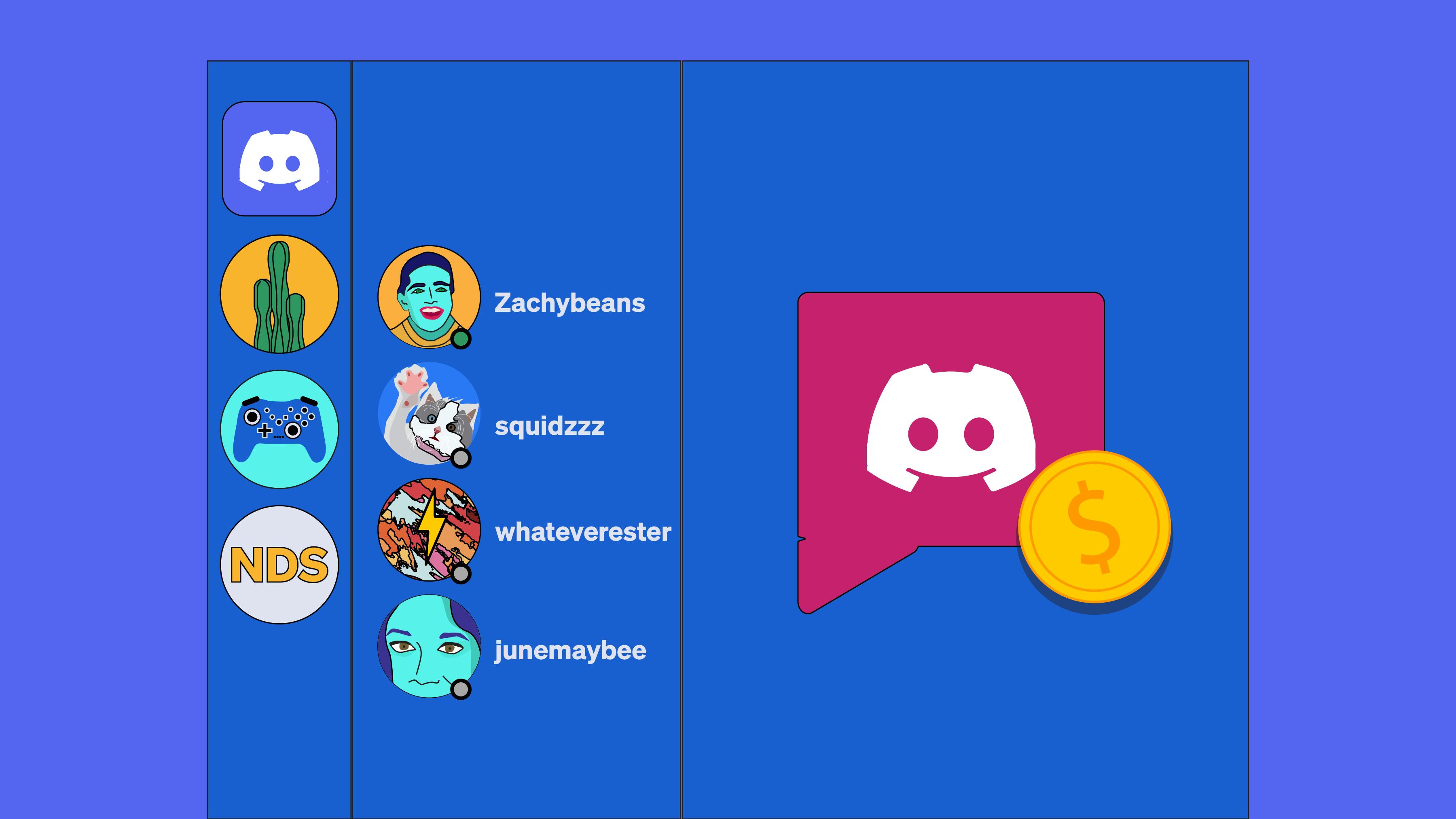If you've just started a new side hustle or dipped your toes into the world of freelancing—congratulations!
Blazing your own path and sharing your creative process with the public is no small feat. It's also a fantastic feeling to have extra money rolling in each month, but with new cash flow comes new ways to manage it.
Side gigs and projects usually require a firm grip on freelancer finances and separate accounts to keep everything organized. It's never too late to create a strategic plan to manage your side hustle or freelance finances.
Keep reading to learn our top tips to get a handle on your extra earnings, so you can get closer to reaching your new business goals.
In this post, you'll learn about:
- Tracking your freelance finances
- Estimating your taxes
- Being mindful about your budget
- Keeping separate accounts for side hustles
- Saving for side projects
- Starting small
- Outsourcing to subcontractors
- Managing your finances with Braid money pools
Track your freelance finances
Luckily, you don't need a fancy or expensive bookkeeping system to track your side hustle earnings—a simple spreadsheet will do the trick.
Side hustles and freelance businesses require careful financial tracking—you'll want to keep tabs on all of the extra money you're bringing in against its related expenses. This way, you'll get a true sense of whether your effort is paying off.
Check out these Excel templates you can use:
Whether you're earning an extra $500 or $5,000 per month from your side projects, there are other benefits of tracking your side hustle cash consistently. After all, you're officially an entrepreneur, with new obligations to report the income and file your taxes.
Jotting down monthly earnings in your spreadsheet can help you quickly calculate how much you need to set aside for taxes. Without this step, you might be a bit shocked when tax time rolls around.
As with everything, there are multiple ways to get things done. If you'd prefer to implement software over a simple spreadsheet, check out these handy options that let you keep tabs on your income. They also have other great features, such as invoicing to clients:
Estimate your taxes
Estimating your taxes throughout the year (or paying quarterly) prepares you to pay your taxes with confidence each Spring. If you don't keep track of your taxes, your side hustle could potentially mess up your taxes in these ways:
- Depending on how hard you worked on the side this year, you could see your tax bill increase by hundreds (or even thousands!) of dollars.
- If your side business is successful enough, you may be required to pay quarterly estimated taxes throughout the year, and the IRS will penalize you if you don't pay them on time.
- Save your receipts! If the IRS decides they want proof that you spent $2,000 on vintage clothes to get your Etsy store up and running, you'll have to prove it's a business expense. Be sure to save the receipts or bank statements to show them.
Small business owners can take advantage of related business deductions. You can check out the IRS website to uncover the different small business deductions you can take.
Consider tracking these expenses monthly, too, like deductions for:
- Office space or supplies
- Software
- Gas mileage
- Internet services
When thinking about paying taxes for freelance income, take a look at the last paycheck from your W2 "day job." You'll see that the employer holds back a percentage of your hard-earned salary to pay for income taxes before the cash ever makes it to your bank account—that's known as federal income tax withholding.
Don't get caught off guard with a massive tax bill when tax season rolls around! No matter how much or little money you make from your side hustle, open up a separate account for tax savings (approximately 20-35% depending on earnings). It's an intelligent way to be prepared for income taxes, plus the self-employment taxes you will owe on top of that income.
So, to refresh, here are some tips for saving for freelance and small business taxes:
- Keep track of deductions in a spreadsheet
- If you are required to pay taxes quarterly, be mindful of due dates
- Save your receipts for business purchases
- Open up a dedicated Braid Money Pool to save for taxes (you can open up as many pools as you need for each facet of your business!)
Be mindful about your side hustle budget
For many side hustles and freelance projects, you won't need to buy everything you need to launch all at once. However, it's still helpful to create a startup budget to plan what you need to purchase in the future. For assistance in figuring out what your startup costs will look like, check out this U.S. Small Business Administration video.
You might want to also talk to entrepreneurs and small business owners who are doing what you're trying to do to paint an accurate picture of startup costs and budgets. They'll likely have a good idea about those sneaky costs you might not have thought of, like fluctuating digital advertising costs.
Taking a less-is-more approach when you're just starting is a wise move for new side hustlers. It's best to delay large business purchases for as long as possible until your cash flow becomes more robust.
Also, you may discover you need to "pivot" your side hustle after being in business for a little while, so it makes financial sense to operate this way.
It's tempting to buy the best new computer on the market and decorate your home office to the nines, but conserving your startup cash is the most thoughtful way to keep your options open as you grow the idea.
It's also important to note that some side hustles can be inconsistent, so it's essential to adjust your budget appropriately as time goes on.
Once you figure out what your budget will look like, you can delegate your expenses within that budget.
You might want to use your side hustle or freelance income to:
- Scale your business: Your extra earnings might go toward new or better equipment, hiring subcontractors, or purchasing more products to keep things running.
- Maintain your business: Paying for things like Internet bills, website hosting fees, office space, advertising, etc.
- Make extra purchases: You might want to use it for additional payments toward your student loans, bills, emergency fund, or other miscellaneous investments.
As long as you set aside money for taxes, that extra cash is yours to spend!
Keep separate accounts for side hustles
It's best to keep finances separate when operating a side business or freelance hustle. One of the best ways to manage your extra income is by keeping it in a different account like a Braid Money Pool, so it isn't blended with earnings from your 9 to 5 job.
Braid Money Pools are perfect for individuals who may have just started their business, and it's a bit too early to open a dedicated bank account. Plus, it's a lot less tempting to blow through your extra earnings when it's in a secure account!
Here are the types of pools you might create as a side hustler:
- Savings Pool: Put aside money for funding your next big idea
- Tax Pool: Set aside money each money to pay your side hustle's taxes (yearly or quarterly)
- Client Pool: A pool dedicated to receiving payments from freelance clients or buyers of your product (if your side hustle sells things)
For details and information about how Braid Money Pools work for freelancers and entrepreneurs: Pool Money for Side Hustles and Freelance Projects
Save for side projects
Haven't started your new business venture yet because you're low on cash? Consider sending small increments of money based on your income to your side project's dedicated money pool, and you might be surprised how much money you'll save up.
Plus, it's much easier to save money for something important when it's in a separate account!
Using a Braid Money Pool is the perfect way to save for creating and preparing to scale a new side hustle or project. Set up your pool now.
Start small
Remember, it's vital to start small to reach attainable goals in business. When you're just starting, try to avoid going into debt by making smarter choices at the get-go.
For example:
- Maybe you don't need a super expensive website designed right now—perhaps Squarespace will do the trick.
- You might not need to invest in lots of paid ads or team photoshoots.
- Consider starting your social media presence organically.
- Instead of renting out a dedicated office space, try a coworking space like WeWork or CommonDesk.
- Sell products online first before scoping out a retail shop.
- If you're running a food business, host popups instead of looking for a restaurant space.
- Always negotiate deals with vendors and suppliers.
- Ask internet and phone providers if there are discounts for new signups.
Focus on the parts of your business you can get off the ground on a bootstrap budget instead.
Consider outsourcing to subcontractors
When you're ready to ask for help and you're ready to grow and scale more, this is usually when the magic starts to happen. To successfully grow your side hustle, you probably won't be able to do it alone for long.
That's why outsourcing to subcontractors will be crucial in giving your side hustle the space it needs to expand.
Consider outsourcing business tasks that can be automated, like:
- Graphic design
- Email marketing
- Social media posting
- Scheduling meetings
Eventually, the tasks that took you hours daily or weekly can be handled by someone else so that you can focus on the big-picture.
You might also want to consider outsourcing other personal tasks that take up time each week so you can focus on your side hustle, like hiring a cleaning service, grocery delivery, or meal prep service.
These services can shave hours off your schedule and allow you to grow the business and save your sanity.
When you're ready to start onboarding people to help you build your side business, you can open up a dedicated Braid Money Pool to pay subcontractors. On a regular basis, you can move money from your "main" Braid Money Pool, where you collect income and send it to your pool just for paying your people.
Manage freelance finances with Braid Pools
Navigating freelance finances can be tricky, but if you walk away from this article with one thing, let it be this—keep your personal and business finances separate. This is the number one way to ensure clear boundaries between your side hustle and your personal finances.
For instance, if you're starting a vintage clothing company, you can use a Braid Pool to store savings to purchase clothing. Then, you can use a Braid debit card to make purchases from that separate account. That way, when you buy clothes for your own personal use, there is no confusion!
When finances divide into separate accounts from the get-go, it's much simpler to avoid confusion between different spending categories as you grow your business.
No matter how you choose to turn your free time into extra cash, setting aside time to manage your side hustle finances, prepare for taxes, and set up separate financial accounts will ensure you get the most out of your business.



